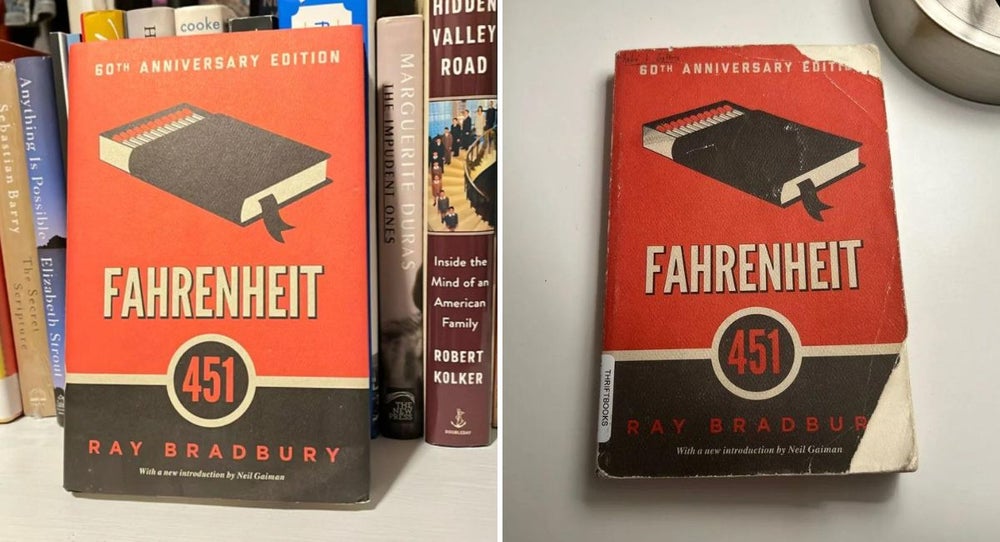What condition is the book in?
The condition of the book is a huge factor in pricing. For rare books and collectible books especially, the difference between excellent and fair condition can be the difference of hundreds or thousands of dollars in resale value.
You can read a full version of our condition guidelines here. Here's a quick overview:
- Selling a book direct from an authorized retailer or something that you’ve published yourself? List it as new!
- If you bought it but haven’t read it (or you’ve read it once and treated it with care), list it as like new.
- If it’s in great condition, but shows some minor signs of use (no dog ears!), list it as excellent.
- If you’ve read it quite a few times and it shows, go for good.
- If it’s well-loved with some imperfection but still intact and readable, list it as fair.
- If the book has lived quite a life and has any torn pages or other major issues, list it as poor.
Keep in mind that you should only list a book as new if it is genuinely unread and completely unused. While a new or like new book can be priced closer to retail, remember to be fair and realistic about what others will be willing to pay relative to just buying a new copy. Listing any books at the full retail price point likely won’t get you many bites, since they’ll be available from other book retailers at the same price and often with free shipping.
For books listed as like new, start from a base price of 70-75% of the original retail price. For example: if the book is currently retailing at $15.99–you shouldn’t list it any higher than $12. If it’s in excellent condition, you can price it for about 55% of retail. For good condition, think 40% retail. If your book is in poor or fair condition, price it accordingly: think 20% of the retail price for poor, 30% for fair.
As part of the condition, also consider if the book has all its original components. For example, sometimes you'll see a first edition of a classic come for sale that's in great condition but is missing the original dust jacket. This will lower its appeal to collectors considerably.
Why are you selling it?
Perhaps the most important consideration of all is to pause and ask yourself why you’re selling the book and what you hope to get out of the sale. Some sellers are just happy to clear some shelf space and to see their books go to a loving home. If that’s the case, pricing your books so that they’re affordable for all kinds of buyers is the right move. If you’re hoping to sell fast for some quick cash, pricing on the lower side is also a good strategy. If you know you have a valuable book and want it to sell to someone who’s been searching for it for a fair price, list it at the best price per your market research.
Relatedly, you can always start with a slightly higher price and if you feel motivated, lower the price later. On Pango, when you lower the price of a listing, it will reshare that listing to our main new listing feed and also send an alert to anyone who has previously saved the book.
Tip: If you want to sell a bunch of books at a time, consider offering a bundle shipping deal. On PangoBooks, you can offer free shipping for folks that buy multiple books from you at the same time.
With all of these considerations in mind, you’ll be able to determine the best price that makes sense for you and your potential buyers. By the way, if you're getting ready to list a book on Pango and are unsure about price, feel free to get in touch with our team and we're happy to take a look.


